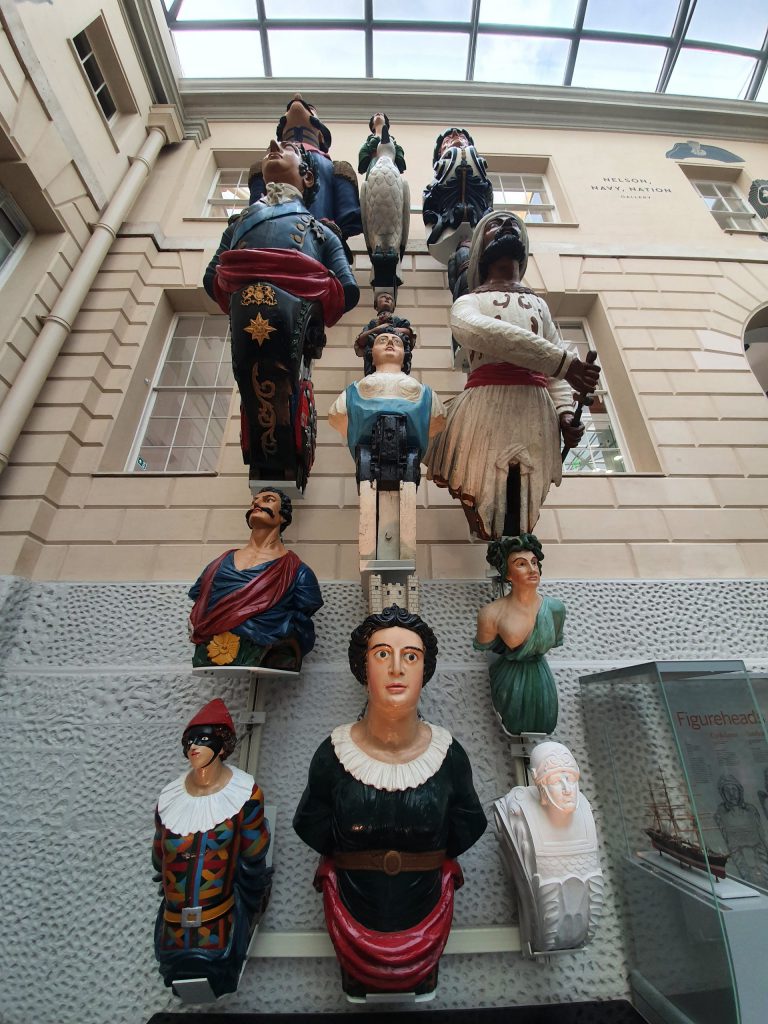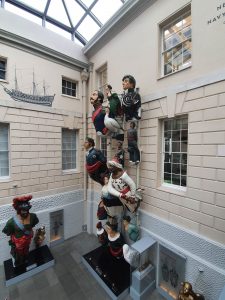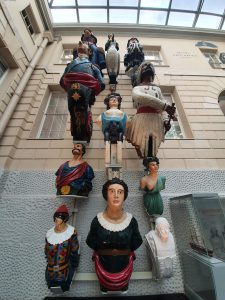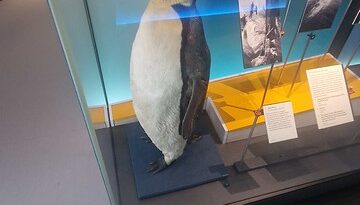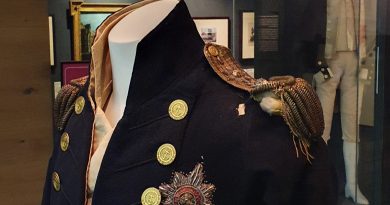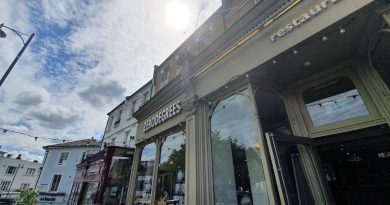London – Greenwich (Borough of) – National Maritime Museum (Figureheads)
There are many highlights in the National Maritime Museum, but these figureheads are some of my favourites in the collection. The largest collection of merchant navy ship figureheads in the world is located nearby in the Cutty Sark museum, but the ones here are Royal Navy figureheads.
Royal Museums Greenwich operate one of the more restrictive copyright policies that I’ve seen from a museum, limiting re-use of their collection imagery. It’s possible to embed the images, but they’re relying on a Flash set-up and that’s being retired. It’s a slight shame as I would have used some of their imagery of figureheads that they don’t have on display in the museum. They’ve made quite an effort with the figureheads though, there’s a separate web-site at http://figureheads.ukmcs.org.uk/ which has 300 of them listed.
The museum explains that back in the eighteenth century, the Royal Navy would usually have full-length figures, but cost cutting at the Navy Board saw an end to that. Some of the figureheads in existence at that point got cut back, with just the heads usually used after that.
In the above photo, there are a few obvious figureheads which stand out. The large one on the right in the middle is from HMS Himalaya, which was built for the Peninsular and Oriental Steam Navigation Company (P&O) in 1853 and was known as SS Himalaya. After a few months, P&O realised that their ship, which was the largest ever constructed, was too big and there wasn’t enough passenger traffic to justify it. This wasn’t ideal for them, as they had just spent £130,000 on building it. However, they managed to convince the Government to buy their ship for £133,000 and it was transformed into a troopship which could carry up to 3,000 soldiers. The ship was decommissioned in 1894 and was then used as a ship to transport coal until it was sunk by the German Luftwaffe at Portland Harbour in 1940. The figurehead had been removed when it ceased to be a troopship, being stored at Devonport until 1936, when it was presented to the Admiralty.
At the bottom left of the above photo is the figurehead from HMS Harlequin, a brig-sloop which launched in 1836. The ship was later used to transport coal and was decommissioned by the Royal Navy in 1899 and was broken up and sold for scrap in 1904. The figurehead was kept and was located on the first floor of Rigging House in the Devonport Dockyard, being donated to the Admiralty in 1936.
Above the HMS Harlequin figurehead is the one from HMS Tribune, in the style of a Roman tribune. The ship was a wooden screw corvette which was launched in 1854, but it didn’t last long as it was sent for breaking up in 1866. I’m not entirely sure that taxpayer’s money was used entirely wisely there. The figurehead ended up in the same place as the HMS Harlequin and was also gifted to the Admiralty in 1936.
The last British battleship to have a figurehead was HMS Rodney, which was launched in 1884 and remained in use until it was broken up in 1909. After that, with the exception of on some smaller Royal Navy ships which still used figureheads, the tradition changed to have a ship’s badge instead. This doesn’t seem quite as exciting to me, there’s something quite appealing about knowing how many sailors from the Royal Navy would have seen the figureheads on these ships and likely been quite attached to them.
My only other comment, for what it’s worth (which isn’t much) is that the figureheads are all a bit pristine. They’ve nearly all been repainted, although not necessarily recently, so they don’t have that feel of having been on the front of the ship. The museum does have plenty of figureheads which no longer have much paint left, and I prefer these as they feel more authentic, but they’re mostly not on display.

